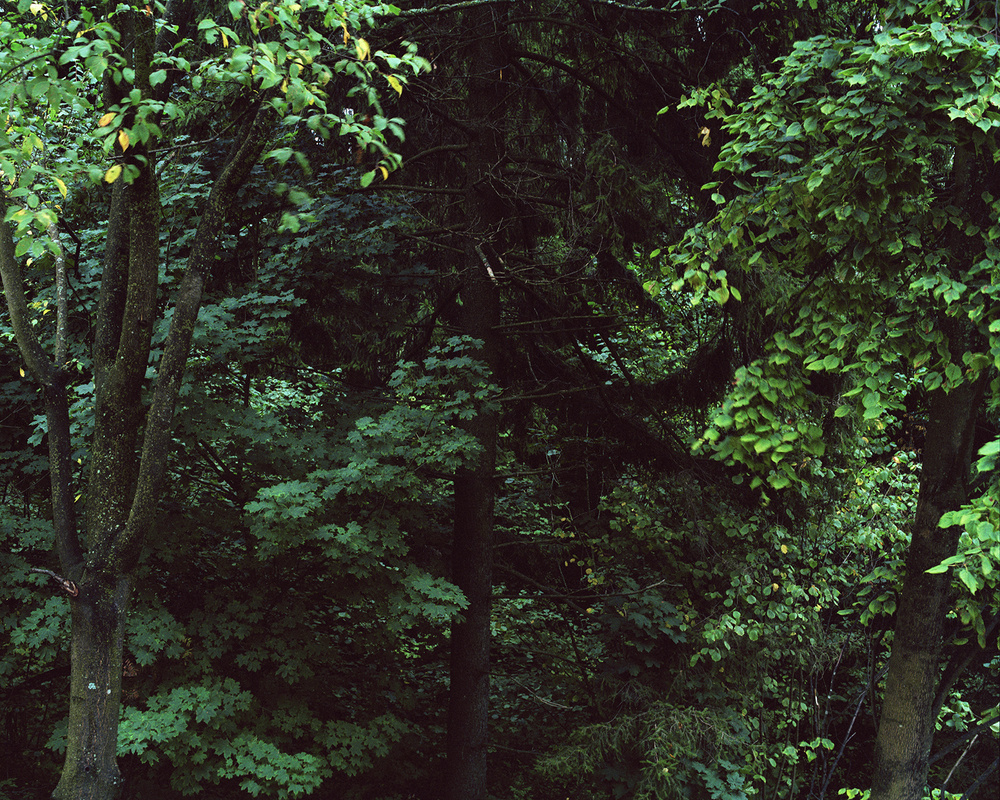The Forest | Parafin
I’ve always liked a good thematic group show, and this one at Parafin didn’t disappoint. The theme is ’the forest’, which are part of our shared consciousness, even for those of us who live in the middle of large cities. Across different cultures and times, the forest represents a quiet place to retreat to and hide. But it’s also a lonely place, where monsters may lurk.
The exhibition begins with an engraving from the mystical French artist Gustave Doré to set the scene. It’s an illustration of the opening canto of Dante’s Divine Comedy, portraying one of literature’s most famous forests:
Midway upon the journey of our life
I found myself within a forest dark,
For the straightforward pathway had been lost.
Doré’s forest isn’t a place of sanctuary, really, his protagonist casting a confused look over his shoulder as he treads over gnarly tree roots. The un-straightforward pathway is completely blotted out by overhanging branches. It’s dark in there, confusing. As well as beautiful.

This theme of beauty and threat persists in my two favourite works from the exhibition. The Lithuanian photographer Indrė Šerpytytė photographed forests as part of her 1944-1991 series. Close cropped, her layers of trees and undergrowth merge into each other, the variegated effects of light and shade confusing the viewer’s depth perception. The forest is palpably sinister; we can hardly see where the ground is, and our eyes strain for what’s hidden under the canopy. The example above is Forest Brothers IV from 2009.
In fact, Šerpytytė photographed hiding places for Lithuanian resistance fighters, “forest brothers”, who battled, and hid from, the Stalinist Soviet regime in the aftermath of the Second World War. The dense foliage of forests served as a dark sancturary for these men, who had left their homes for fear of being put to death. Their refuge among the trees was involuntary. Each brother was alone.
So the work plays into the double-edged forest feeling described above: the forest as a place for solace and retreat, but at the same time as a threatening, lonely place.

A similar sense of foreboding pervades a series of pictures from UK-based German photographer Melanie Manchot. In two works at Parafin, she depicts traces of snow left behind in dense pine forests, at night. Remains (End of the World), from 2018 and pictured above, lives up to its apocalyptic title. The snow on the ground is almost the only source of light, weakly reflecting a single patch of sky visible at the top of the frame.
Everywhere else is pervading blackness, with the pine tree canopy extremely dense. Only a few tree trunks are picked out in the gloom. The forest seems endless. It’s beautiful - and thank you Parafin for leaving this C-print uncovered by any reflective surface to take away from the deep blacks of this photograph.
The silent sylvan scenes captured by these artists - Doré, Šerpytytė, Manchot - have great natural beauty, but are freighted with dread. That the same mood persists across all three works is a tribute to the exhibition’s great curation, as well as the power of this cultural archetype. I loved to get lost in these forests, safely surrounded by the bustling city on a rainy summer afternoon.
The Forest is at Parafin (London). 21 July - 04 September 2021